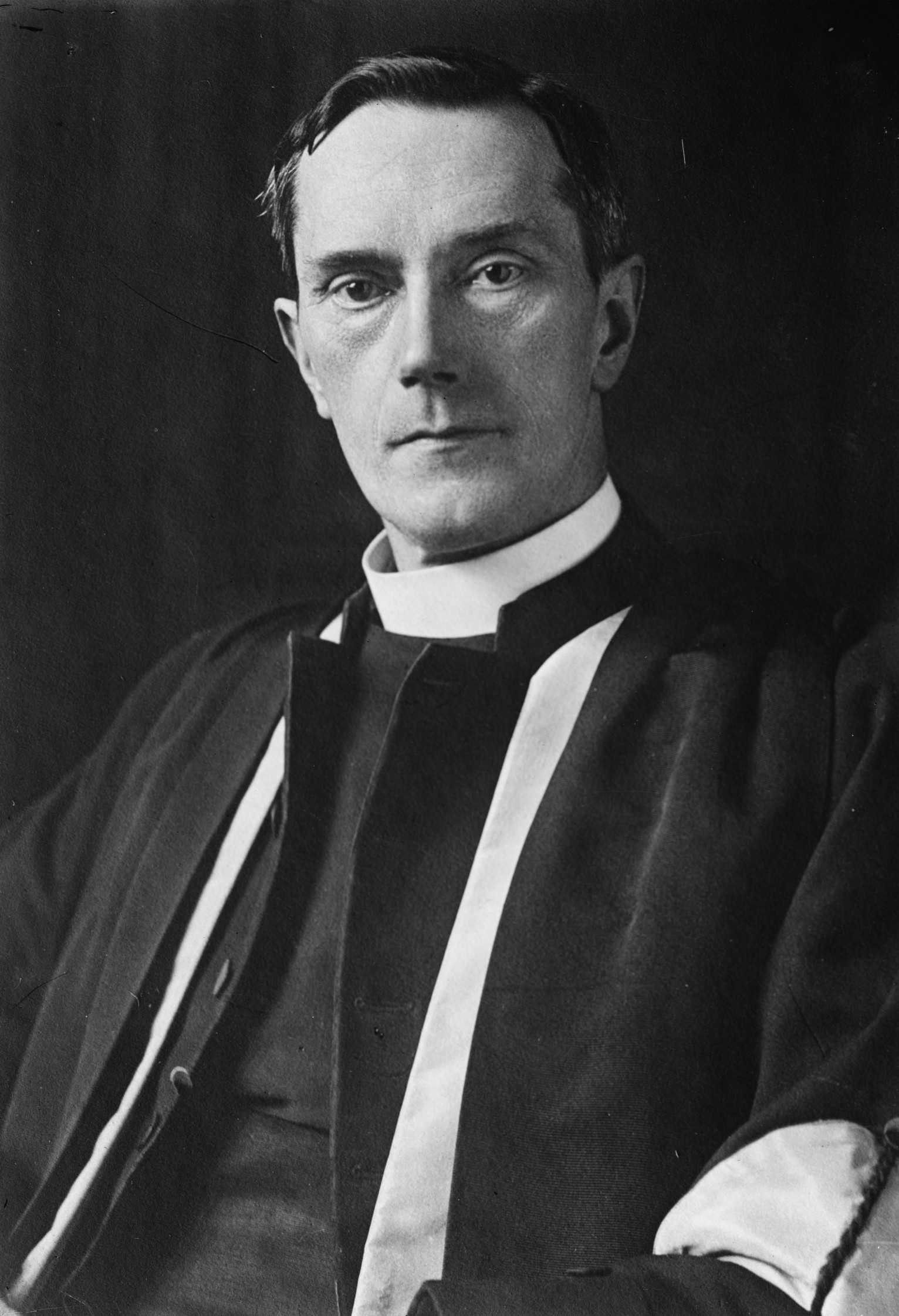On Friday, April 4, as most are already aware, Judge Randy Bellows issued an
88 page ruling in which the judge found that Section
57-9 of the Virginia Code, entitled "How Property Rights Determined on Division of Church or Society applied to the dispute between the Episcopal parishes that have purportedly seceded to the Church of Nigeria by joining CANA. Judge Bellows did not determine whether the statute, on its face or as applied to this dispute, is consistent with the First Amendment to the U.S. Constitution; nor did he determine who properly has title to the various church buildings and associated property.
The Anglican blogosphere is of course rife with comment on this decision; I'll try to confine my review of it to legal analysis, as my
personal views on the CANA secession have already been set out in
prior posts.
1.
Read the StatuteFelix Frankfurter, prior to his appointment to the Supreme Court, used to
tell his students at Harvard that there were three steps in statutory interpretation: read the statute. Read the Statute. READ THE STATUTE. This is an oversimplification, of course. When a statute is not clear, resort may be had to legislative history--documents or transcripts of debates on the part of the body enacting the statute that can clear up what the legislators believed they were passing, or prior judicial interpretations. (At the risk of shamelessly promoting my own work, I provide a fuller analysis of these principles in the introduction to
my 2004 book on the First Amendment).
So let's begin with the statutory text, with thanks to
KLady for the link:
A. If a division has heretofore occurred or shall hereafter occur in a church or religious society, to which any such congregation whose property is held by trustees is attached, the members of such congregation over 18 years of age may, by a vote of a majority of the whole number, determine to which branch of the church or society such congregation shall thereafter belong. Such determination shall be reported to the circuit court of the county or city, wherein the property held in trust for such congregation or the greater part thereof is; and if the determination be approved by the court, it shall be so entered in the court's civil order book, and shall be conclusive as to the title to and control of any property held in trust for such congregation, and be respected and enforced accordingly in all of the courts of the Commonwealth.
B. If a division has heretofore occurred or shall hereafter occur in a congregation whose property is held by trustees which, in its organization and government, is a church or society entirely independent of any other church or general society, a majority of the members of such congregation, entitled to vote by its constitution as existing at the time of the division, or where it has no written constitution, entitled to vote by its ordinary practice or custom, may decide the right, title, and control of all property held in trust for such congregation. Their decision shall be reported to such court, and if approved by it, shall be so entered as aforesaid, and shall be final as to such right of property so held.
As Judge Bellows explained, however, Virginia follows what is known as the "plain meaning rule," which employs the ordinary use of terms employed in a statute as of the date of enactment, and does not presume technical usage particular to any one context. (Opinion 47-49).
2.
Battle of the ExpertsThe statute was enacted, according to the court, in substantially its present form in 1867. (Opinion at 49, n. 37). According to the court's summary of CANA's expert witness testimony, the occasion for its enactment was a series of schisms within the Presbyterian and Methodist Churches,which led to claims and counterclaims over property possession. (Opinion at 49-53 (Valeri); 54-57 (Irons)). The Methodist Church's struggles, in particular, led to the passage of the statute.
Id. Although Judge Bellows noted the existence of "much testimony" concerning the separation between the TEC parishes in the Confederacy and those in the Union during the Civil War, he found no particular guidance from such testimony, as the existence of any division other than a geographical decision was unclear. (Opinion at 53, n. 44). From Judge Bellow's summary, TEC's expert witnesses did not address the circumstances of the enactment of the statute, but testified that, in Episcopal Church governance, a "division" is only one that is recognized as legitimate by the church authorities, and that they provided testimony as to the nature of relations between TEC and the remainder of the Anglican Communion. (Opinion at 63, 57-63).
Judge Bellows was clearly more impressed with the specificity with which CANA's experts addressed their testimony to the Virginia statute's passage and early application; TEC's more holistic approach from the perspective of Episcopal polity did not seem to him persuasive. Regrettably, I see his point. The problem here is not whether the division is one "recognized" by TEC, or acquiesced in by it--we'd hardly have a litigation if that was the case. Rather, the question is what the Virginia General Assembly meant by the terms at issue, and, under those terms whether the events at hand constitute a "division" within a "church" or "religious society" constituting "branches," one of which the dissentient parishes have moved to join. By finding the Anglican Communion constitutes a "religious society" (at least; it might also equate with a church), and that TEC's affiliation with it means that it is not "entirely independent", the court concluded that deference to TEC's "constitution, ordinary practice, or custom", which is only provided to such "entirely independent churches, was not warranted here. (Opinion at 48; 76). Put differently, because the court found that the Anglican Communion was a "religious society" of which TEC, the ADV and the Church of Nigeria were branches, the court dispensed with any deference to TEC's canons and polity, and found that the statute as interpreted mandatorily awards the property to the local congregation.
TEC appears to have focused most of its firepower on the question of "division," which, speaking as a Monday morning quarterback, seems profoundly in error. Simply put, that term, in its "plain meaning" seems to be clearly applicable, and the effort to limit the statute to amicable partings appears foredoomed.
The court is on shakier ground when it treats the AC as a "religious society" in the statutory terms; Judge Bellows undestandably relied on TEC's expert's concession that a "religious society" can denote a "much looser federation" and on the description of the Archbishop of Canterbury as "President" and "chief pastor." Despite this, I think his analysis is dangerously close to a judicial ruling structuring ecclesiastical polity. (see pt. 3, below). In view of TEC's expert's concession--a point I had not focused on in my first blush reading, after which I commented
here and
here, I see why Judge Bellows was led to the conclusion he reached. Still, by this broad definition, a good case could be made that the
World Council of Churches would fit it--which would, I suspect, make for some interesting litigation possibilities.
More to the point, the reading of the statute to include the Anglican Communion as a religious society, and TEC and the CoN as branches thereof works a forfeiture of a church's ability to order property relations when there is any tie to other churches, a significant statutory disincentive to ecumenicism, or even ecumenical collaboration. The statute as read would polarize churches, either requiring total segregation from each other, or eliminating ecclesiastical polity in favor of legislatively mandated congregationalism. My first reading, linked above, was that the General Assembly could not have meant this result; upon a second reading of the Opinion, I'm not so sure.
3.
The Statute and the First AmendmentThe First Amendment's guarantees, explicitly imposed only upon Congress, have been deemed to have been incorporated (made enforceable) against the states by the Fourteenth Amendment, first noted in
Gitlow v. New York, 268 U.S. 652 (1925). The incorporation doctrine was first applied to the Establishment Clause and Free Exercise Clause in
Everson v. Bd. of Educ., 330 U.S. 1 (1947). For over 60 years, though questioned by some such as Justice Thomas, the Supreme Court has held in an unbroken chain of precedent that the states cannot make laws respecting an establishment or religion any more than can Congress--nor can they inhibit its free exercise.
In
Jones v. Wolf,
443 U.S. 595, 602-603(1979), the Supreme Court held that:
the First Amendment severely circumscribes the role that civil courts may play in resolving church property disputes." [Presbyt. Church v. Hull Church, 393 U.S. 440,449 1969]. Most importantly, the First Amendment prohibits civil courts from resolving church property disputes on the basis of religious doctrine and practice. Serbian Orthodox Diocese v. Milivojevich, 426 U. S. 696, 710 (1976); Maryland & Va. Churches v. Sharpsburg Church, 396 U. S. 367, 368 (1970); Presbyterian Church I, 393 U.S. at 449. As a corollary to this commandment, the Amendment requires that civil courts defer to the resolution of issues of religious doctrine or polity by the highest court of a hierarchical church organization. Serbian Orthodox Diocese, 426 U.S. at 724-725; cf. [Watson v. Jones], 80 U. S. [679],733-734 (1872).
...
The primary advantages of the neutral principles approach are that it is completely secular in operation, and yet flexible enough to accommodate all forms of religious organization and polity. The method relies exclusively on objective, well established concepts of trust and property law familiar to lawyers and judges. It thereby promises to free civil courts completely from entanglement in questions of religious doctrine, polity, and practice. Furthermore, the neutral principles analysis shares the peculiar genius of private law systems in general -- flexibility in ordering private rights and obligations to reflect the intentions of the parties. Through appropriate reversionary clauses and trust provisions, religious societies can specify what is to happen to church property in the event of a particular contingency, or what religious body will determine the ownership in the event of a schism or doctrinal controversy.
Simply put, the Viginia statute, as applied here, eliminates the flexibility relied upon by the Supreme Court in validating neutral principles, and, what is worse, requires the trial court to parse polity carefully (and, I think in a manner that is heavily slanted in favor of legally mandated congregationalism, as described above). Another saving quality alluded to by the Supreme Court is extinguished by the court's reading of the statute--that is, the ability of a church to plan for any divisions or schisms, and in advance determine these questions. The Virginia statute takes that ability away as well, and, as construed by Judge Bellows, I believe 57-9 contravenes the scope of permissible adjudication of property disputes as set forth in
Jones v. Wolf.
As of 2007,
Jones v. Wolf remains good law.
See, e.g.,
Matter of Congregation Yetev Lev D'Satmar, Inc. v Jacob (Ny Ct. App. 2007). Therefore, while I think that the interpretation of section 57-9 may stand up on appeal, I believe that its constitutionality is very open to question, and could only be upheld by subjecting religious bodies to significant state and federal interference in their internal polity and doctrine.




